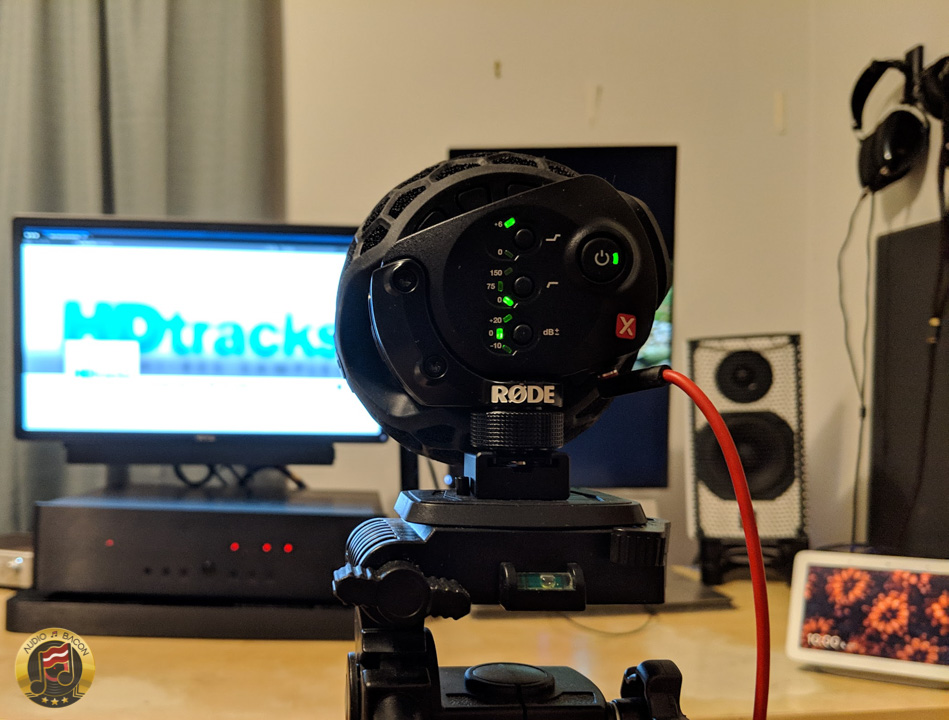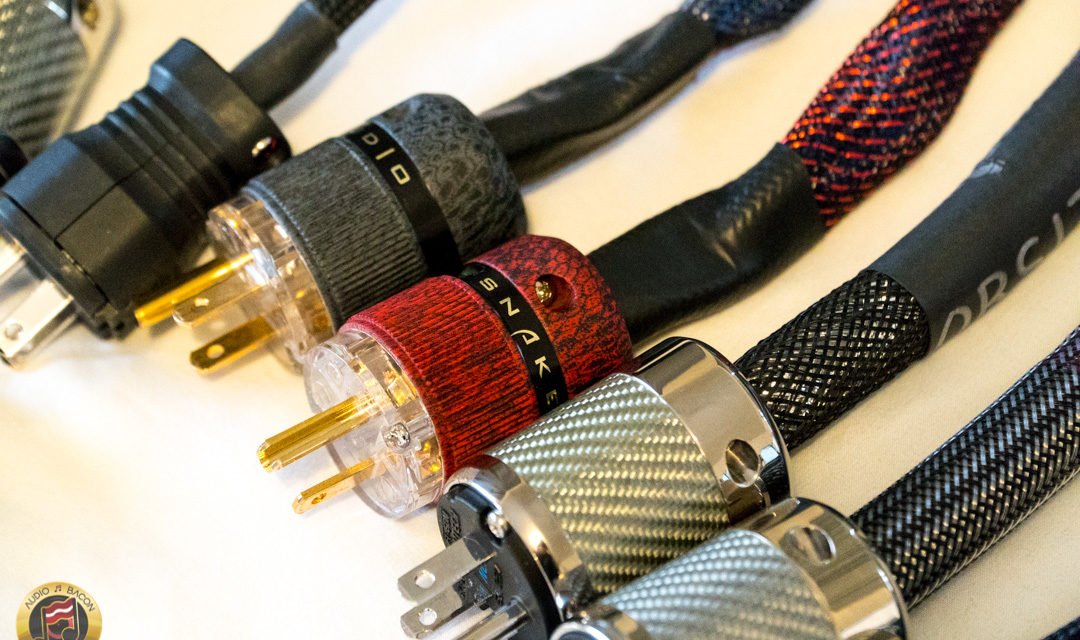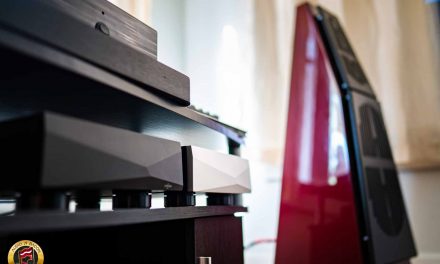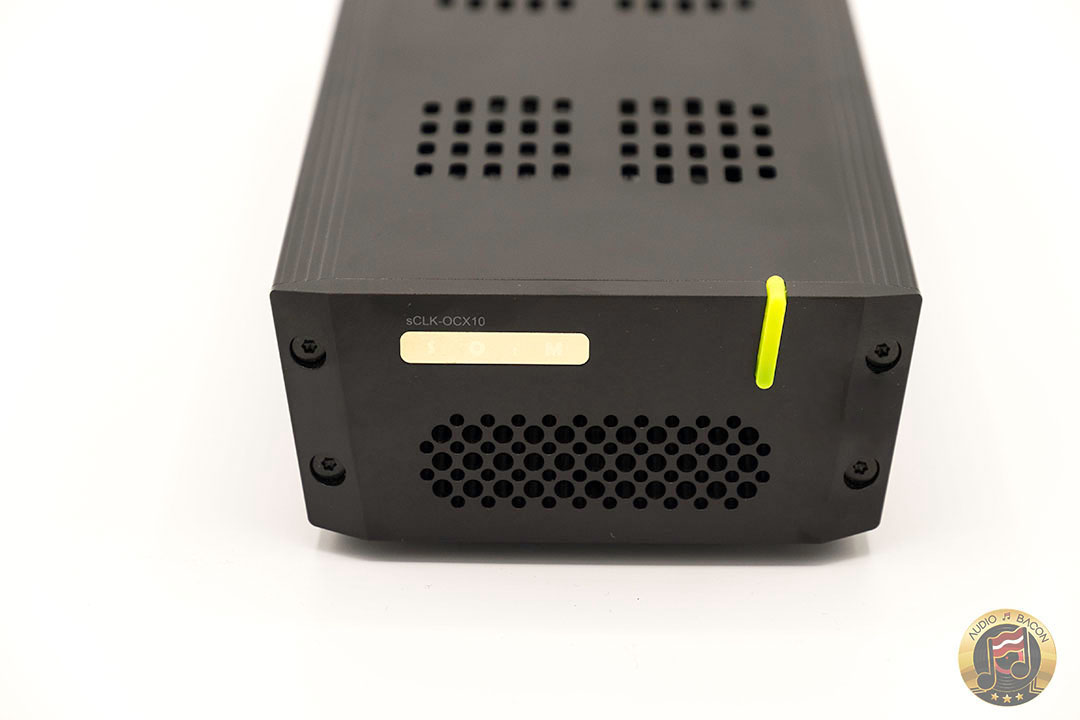Intro
Contents
If you’re interested in the power cables shootout: 27 Best Audiophile Power Cables. The following is just a discussion on a comparative video.
Most audio reviewers find it pointless to record what they hear – and for good reason. There are just too many variables. Including microphone quality, recording device, compression after delivery, and the differences in the end-user listening environment.
It’s impossible to fully assess a piece of equipment from a YouTube recording (“fully” being the keyword). Especially when it comes down to purchasing decisions. However, after tweaking and playing with some recordings myself, I realize there’s some value in sharing these comparisons. Allow me to explain.
That A/B video…
A few months back, I posted a quick video comparison with the KEF LSX and KEF LS50W. It was done hand-held, on a cheap Sony A6500 camera with its internal microphone.
My expectations were low, but I thought it’d be a fun experiment. A few friends remarked “Are you even going to get 100 views on that? Seems a bit pointless.” Well, that video now has over 30,000 views.
With the original files, it was easy to determine which speaker was playing. Even on a laptop. Not too much of a surprise, as there’s a huge tonal difference between these two speakers. And I didn’t need an expensive microphone to hear them. But what about YouTube?
As you know, YouTube (and Vimeo) compresses audio down to 320 kbps. However, many commenters were still also able to hear the differences I heard. They were able to decide which one was brighter or warmer – and even which one had more detail or a larger soundstage. Interestingly enough, a lot of them weren’t even using “audiophile-grade” equipment.

The point is, we’re still able to hear relative differences between these two speakers (in regards to detail and tonal color). That’s still useful information! So that got me thinking “What if I use better recording equipment?”








Did someone realy feel change perfomance with luxury or cheap power cable?
Some people just can not stand the fact that power cables DO make a difference. It drives them nuts. It IS nuts.
Agreed. Most of those guys are just engineers – not audiophiles. I don’t think the waveforms lie. I mean, the microphone could hear the differences. So, I guess electronics are susceptible to the placebo effect as well? lol
Was this an A/B test between the KEF’s a power cable shoot out? Im confused. I tried to read the entire article but could find this on here.
Very nice article!
I have always been a true believer in upgraded pc on all my equipment…the proof is in the sound…if you truly just sit and listen with no distractions then it should be obvious the difference sounds make with a very well made audiophile pc.
Thanks for a great write up!
the power cables -i couldnt hear a significant difference at all – i think the power cable thing is very over-rated
but the kef speakers – i could hear the difference undeniably – i liked the sound of the b section better
Neither could I go listened and listened with my eyes closed and could not hear a difference, using expensive headphones as well. I would save my money and stick with the generic cable.
Hello,
I am the writer of another blog, hifible, thank you for your work, I love it! I can hear differences, and in this set up I really favour the Snake River Audio Cottonmouth (standard version not signature). It has something special in the same way the old school british monitor have. It reminded me of the Spendor SP1 and SP1/2 and of the LS3/5a- It is organic and musical expecially in the reproduction of the silence, it is not electric, not hifisezed.
“Again, if you have any recommendations on recording equipment or process, please let me know.”
Outside of doing a A/B tests of two of the same amps or DACs connected with the two different power cables, it would be pretty hard.
Also in my tests, using a amplifier is much better than using a DAC to tell apart power cables. A heavily shielded power cable will rob the amp of its dynamics. & sound overtly warm vs any non-shielded cables. Though a non-shielded cable with poor geometry will sound bright & shrill.
An easier way would to identify the inner designs of the cables & test the ones further apart from each other to see if there are distinct differences. E.g. a shielded cables vs a non-shielded cable, a cable with complex geometry twists vs one with straight wire cable Any ones with cooper vs silver etc…
Great tips, Bob. I’ll keep that in mind for the next recording. I also thought power cables on the amplifier would make the differences more pronounced – but that turned out to be very DAC and amp dependent.
Nice article.
I am another who has no difficulty hearing differences between power cables, and I have tried several.
For those planning to do multiple power cable comparisons, one thing to keep in mind is that these cables, to varying degrees, don’t like being moved. Depending on how much movement, some can take a few hours to settle down again before they perform as intended. Definitely an issue for my Shunyata cables.
This is meaningless unless done in person as part of a double blind test. There is no way to ensure that you kept variables the same for each cable. There indeed is no measurable difference in any of these cables and there is a reason that most reputable amplifier manufacturers never provide high-end cables (other than sufficiently large gauge to conduct 15-30A for most home audio) until VERY recently – and that reason is money. There is big money in mega-expensive cables, heck even moderately priced ones so they’d be stupid to ignore that potential revenue stream. But ask ANY engineer for Krell, Mark Levinson, or the men themselves – John Curl or Bob Carver for example – whether an AC mains cable makes any bit of difference provided that all cables are intact and functioning as intended (i.e. not damaged or unable to conduct sufficient electrical energy) and they’ll laugh in your face or nicely brush off the question.
Besides, if you’re SERIOUS about this AC mains cabling “issue” then you’ll re-wire your entire home. Hmmm….that isn’t something many people do, now, is it?
This is a joke. I got a very good laugh out of it.
Can we please end this debate once and for all? Please conduct a double blind listening test in whatever controlled environment to which you have access. https://en.wikipedia.org/wiki/Blinded_experiment#Double-blind_trials
Until you or someone else does this, it’s all meaningless conjecture and uninformed opinion that cannot be reproduced in a statistically significant (i.e. better than a blind guess) manner.
Thanks.
Tom Collins, Texas
Really?!Just wondering Tom,
Have you conducted a double blind listening test on anything? I have and they are very revealing! Many people do.
Cables can make a difference, but it is dependent on the resolution of the system AND the resolving power of the listener.
Just because you can’t hear something, doesn’t mean others can’t .
Science is not absolute in its ability to explain the physical world. Just ask a scientist!
I honestly expected the recording to sound *a lot* better given the equipment being used. I shot this recording of my old Audio Physic Virgo Vs so that the buyer could hear them playing – on my cellphone. I put zero effort into it, I just sat down on the couch and pressed play and held the phone in front of my face. I think it sounds significantly better than what I’m hearing here. There’s some actual soundstage width for one, and some real percussion for another so you can get some semblance of what’s happening in the lower frequencies.
https://youtu.be/IuCHON_Xgyo
Given the quality of the mic you’re using, I would’ve expected something more like this: https://youtu.be/0zQKXwAxiHs
I use Audioquest Thunder and Zu Event power cords. My cords are no where near prices at the some of these tested cords. I never really bothered doing AB testing in my system simply because I don’t have time. But I like to believe that my power cords make some difference in sonic quality compared to stock power cords. However I cannot see myself spending much more money on a power cord because if you look at inside of audio devices there are number of wires connecting AC maine into the power transformer. So unless these wires are also super high quality what’s the point of having an expensive power cord? I think what we hear from PC is how electrons are arriving into circuitry with certain amount of noise. So once reach certain threshold of noise in electricity, sound should be indistinguishable.
Many of these cables are well-built – so it all comes down to how it sounds to you. I’ve probably heard over 200-300 power cables. They all have their own “flavors” and depends on what you’re looking to add/subtract.
Although the relative differences are similar across systems – the magnitude of those differences varies between those systems and the components. For example, the Furutech DPS-4 seems to sound better at the wall or on amplifiers while the Snake River Audio Signature Cottonmouth sounds better on digital gear.
Hi,
Since you have a lot of experience with power cables, can you recommend me a cable which will increase the bass of my LS50 Wireless. I find the bass a bit too lean and the highs a bit shrill and mids a bit too forward especially at high volumes. Very fatiguing to listen to at high volumes.
If you want something dark, Atlas Eos 4.0 dd. The Furutech DPS-4 will soften those highs a little and add more meat on the bones. The DIY Acrolink 7N is not as dark as the Atlas and might also be a great pairing (and is a lot more affordable). The Vovox Textura is probably the most balanced one and could be purchased directly. If you have a lot of cash, the Audience Au24 SX.This cable will smooth it out and dense it up.
Thanks alot for the video, the differences can be heard, for example the soundstage is presented in varying ways between the cables.
Have you auditioned the Mad Scientist power cords?
I’m looking for one or more power cords, I probably will want to have a cable with quite “dense imaging”, rather than too “airy”, the Vovox seems to be an alternative, I can hear that in the video. I’ve tried the Musical Bliss M1 power cord in my system this past weekend, it was quite spectacular.
I didn’t even know they made a power cord. Wow, great years. The Vovox is definitely denser as far as atmosphere. I think it was the only power cord under $400 I kept. And I purchased two. Not the last word in transparency or delineation, but musical. I’ll have to try the Mad Scientist and Musical Bliss M1.
Among other things we compared the Musical bliss m1 pc to my Aqua la scala dac with Ansuz and Audience cables, but mostly we used it from the my supra dc-blocker to the musical bliss power distributor. Not sure how the m1 stacks up against similar priced cables though. Actually we weren’t impressed by the power distributor, especially not for the money. It where better than my own considerably cheaper Entreq, but not enough of a difference. Furthermore we tried ansuz darkz cable lifters under my audience speaker cables and under the built in power for my entreq distribution, under the speaker cables nothing much happened but unter the power cord it made the sound calmer in a preferable way.
A few days ago I read a longer post by Romaz att audiophilestyle forum, he referred to a time when you and the guy from Chord met up and listen to the chord dac and other things. Romaz said that you as yourself also have stated valued “timbre” and “warmth” above “details”, my experience is that I value similar aspects. Its refreshing to see that everything isn’t about chasing resolution and other typical “hifi” parameters.
Keep the good work up.
Thanks.
Yeah, I think resolution and transparency were made for an “impressive” listening experience. Especially at the beginning of my journey. It was stuff “we never heard before.” But just because we haven’t heard it before – doesn’t make it more musical – or natural. Striking that balance IS the entire journey for an audiophile. We want to hear just enough of everything to be emotionally engaged. And how we get emotionally engaged depends solely on the individual.
They sound more or less different, that much is audible. and quite surprising. But which one is best i cannot determine, because it is not my stereo set up.
The differences though ought to be also measurable somehow. This is the one thing i am missing, although i do not know which measurment procedures to use to identifiy the differences, and its causes. Is it the plug, the connection of wire to prong, the copper , the cable geometry, etc?
My tests several years ago between different qualities of copper, the difference was in harshness. Now i also hear “slowness” differences. Quite weird.
If you ever find out how to measure this – let me know. The waveforms are surely different. Some are definitely slower/softer more liquid while others have more hype and texture.
I think the simplest way to measure would be to connect test equipment to the DC output of the power supply in the component. As you hopefully know, the AC supply from the wall is not actually part of the signal chain in an audio component. The AC is converted to DC. Monitoring the DC output should tell you if the AC power cord is making any difference in how the component performs.
Nice Video. I use 4 Vovox Texturas power cables in my own system. I always find Vovox(along with some other non-shielded cables) to be the most musically neutral and alive in my own system and bring out most musical contrast. Perhaps is the none-shielding nature allows for lower capacitance and magnetic reflections.
From the video, the male voices is more “humourous” on Vovox and more “serious” and monochromatic on other cables. The snake River Audio Cottonmouth comes quite close to Vovox on that account and I find Cottonmouth to be unshielded too, perhaps not a coincidence. However, Vovox Texutra does have drawbacks: its detail retrival and warm nature, the non-shielded nature also allows more noise to come in system. Even though I own 4, I somehow choose not to use it on my Terminator because it alwasy sound a little coarse there.
Cottonmouth or Cottonmouth Signature? Your assessment seems to align with mine.
To add some of my personal observations :
The advantage of Vovox ( and other nonplastic-insulated non-shielded cables: Proxima, Mg-Audio…) is quite system dependent:
On Phy-Hp: These are Alnico-Silver Speakers loaded on open baffles. Their design philosophy includes low interface micro discharges (MDI), for that Phy Cables are also nonshielded but insulated with cotton and rejects plastic in their whole chain.
On those Phy-Hp, Vovox cables (along with other cotton-insulated cables) can really bring out the fluid and alive nature of music while shielded cable costing 10 times the price could only sound much more plastic and dull (at the same time more “HiFi”). The gap is Huge.
On Voxativ speakers and Grado-headphones: Voxativ are much quicker but much less fluid than Phy-Hp. On Voxativ and Grado, Vovox still are a little more fluid and alive, but the advantage is small.
On most multi-way speakers or most headphones: Vovox still has an audible edge on sounding more alive and less serious, but it is not more fluid then shielded cables and might even sound more noisy thus coarse.
My take: Just like capacitance, inductance, resistance would degrades sound quality, MDI-distortion can also degrades sound quality, yet in a very different way. Only a MDI-low /capacitance-low speaker system could truly show the inherent advantage of not using plastic or shielding in cable design.
What’s more important, every design is flawed in its own way—finding synergy could be the key.
Hi jay,
Did you have any chance to hear and test the musical bliss cables? Especially in comparison to ansuz stuff?
I think the High Fidelity Reveal power cord is best for that system. Furutech and Veristarr good but slight coloration in midrange.
Audience front row as good with Banjo instrument as the Reveal, but a bit too forward on that small system.
I could not hear much difference in the bass, but I must blame the deficiency on my computer speakers. I’m impressed and happy to be able to hear the differences ! This will save lots of time.
1) Why the useless zoom video, and why did the angle keep changing.
2) There was a person in the room sitting too close, but not exactly the same distance from the microphone at all times. There was a slight frequency response variance that a power cable will not cause.
3) Why not present the segments, as that, segments, so we can do proper A/B comparisons.
I am sure you are pretty impressed with your test. I am not, but then that is why you write about this stuff, and why I develop professional audio products and research sound.